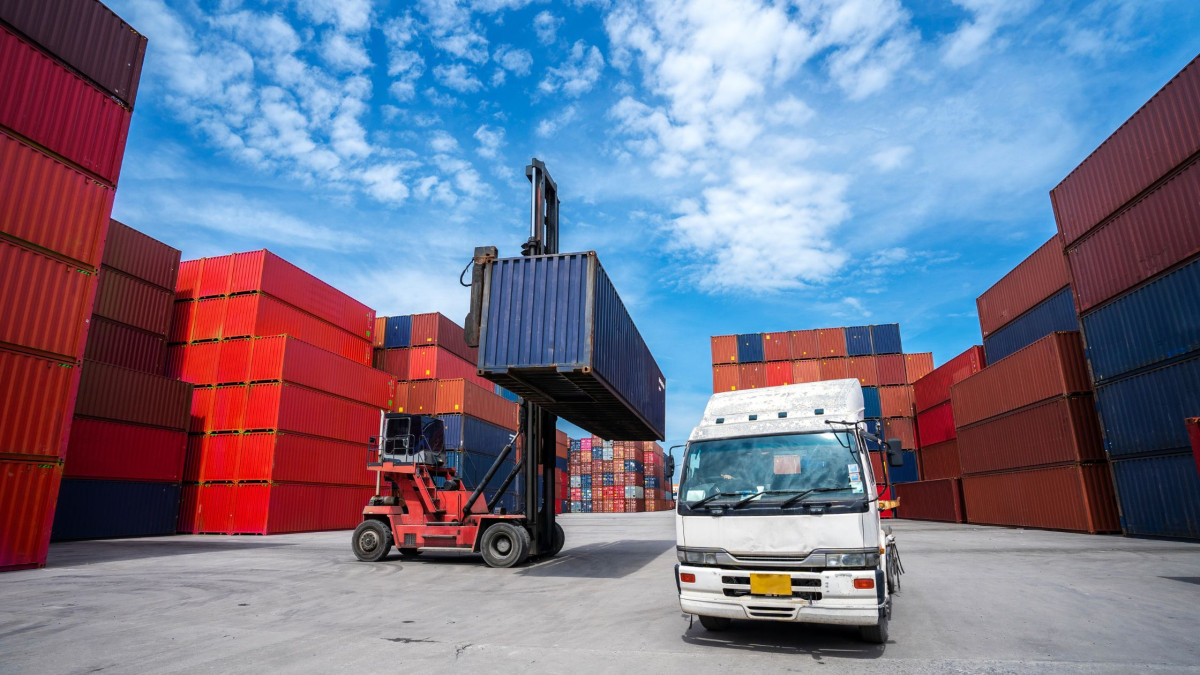Transloading Explained: How It Works and Why It Matters in Supply Chains
Greenwood, United States - August 8, 2025 / Velox Express /
Transloading is the process of transferring cargo between different modes of transportation, such as from a ship to a truck. This method accelerates delivery, reduces costs, and enhances flexibility in the supply chain. You may wonder how transloading provides these benefits and what role technology plays in this process.

As you look further into it, you’ll discover the steps and tools that make transloading important in modern logistics.
The Transloading Basics
How does transloading fit into the larger logistics puzzle? At its core, the transloading definition revolves around the transfer of cargo between different transportation modes, such as shifting goods from ships to trucks or trains to planes.
This logistics strategy is crucial for enhancing the flexibility and efficiency of your supply chain. By optimizing transportation modes, transloading enables you to adapt quickly to market changes and streamline your operations.
It supports complex supply chain dynamics, enabling faster shipping and reducing costs. When you employ transloading, you’re not just moving goods; you’re orchestrating a seamless logistics operation that aligns with your strategic goals.
This approach ensures that your supply chain remains robust and responsive to the demands of global commerce.
Steps in the Transloading Process
Having grasped the basics of transloading, let’s explore the specific steps involved in the process.
First, familiarize yourself with transloading terminology to ensure smooth communication throughout.
As freight arrives, precise cargo handling techniques are crucial for unloading and inspecting goods.
Next, sorting items based on destination and priority ensures efficient integration of the supply chain.
Temporary storage might be necessary to align with logistics optimization strategies.
After sorting, you will reload the cargo onto a new transport mode, securing it carefully to accommodate the dynamics of freight transportation.
This meticulous orchestration enhances the overall efficiency of the process, ensuring every step aligns with broader logistics goals.
Key Components of Facilities
A transloading facility is the heart of the logistics operation, efficiently transferring goods from one mode of transportation to another.
To ensure everything runs smoothly, focus on these key components:
1. Layout Design: A well-thought-out layout maximizes space and streamlines workflows, boosting operational efficiency and tackling logistical challenges head-on.
2. Safety Measures: Implementing rigorous safety measures protects workers and goods, ensuring a secure environment that minimizes risks and maintains smooth operations.
3. Inventory Management: Robust inventory management systems keep track of goods, reducing errors and facilitating quick decision-making to overcome logistical hurdles.
Equipment Used in Transloading
To ensure seamless operations in transloading, you’ll encounter a range of essential equipment designed to handle the complexities of shifting cargo between transport modes.
Material handling equipment, such as forklifts and cranes, ensures transloading safety by efficiently moving goods while minimizing risks.
Technology tools, such as RFID and GPS, enhance cargo tracking, ensuring shipments are secure and accounted for.
Regular equipment maintenance is crucial to prevent downtime and maintain operational efficiency.
Compliance with regulatory standards is non-negotiable, ensuring all machinery and processes meet safety and environmental requirements.
Additionally, workforce training is vital, as it equips your team with the skills necessary to operate equipment safely and effectively.
This comprehensive approach ensures a smooth, safe, and compliant transloading process from start to finish.
Cost and Efficiency Benefits
Transloading often maximizes cost and efficiency benefits in the logistics sector by optimizing transportation routes and leveraging bulk shipping discounts.
You can achieve significant cost savings and efficiency improvements, which can transform your logistics operations. Here’s how:
1. Route Optimization: By selecting the most efficient routes, you reduce travel time and fuel costs, leading to substantial cost savings.
2. Supply Chain Agility: Transloading boosts your supply chain’s flexibility, allowing you to quickly adapt to market changes and demands, giving you a competitive advantage.
3. Competitive Advantage: Efficient transloading can streamline operations, improve delivery times, and enhance customer satisfaction, setting you apart from competitors.
Addressing Transloading Challenges
Navigating the challenges of transloading demands strategic planning and robust systems.
You will encounter coordination challenges while managing various transport modes, necessitating clear communication to ensure everything stays on schedule.
Mitigating damage risks is crucial; implement thorough inspections and secure packaging to protect goods.
Time management is another hurdle, needing careful scheduling to prevent delays and ensure timely deliveries.
Regulatory compliance must be a top priority, so stay informed about all relevant laws and regulations to avoid costly penalties.
Lastly, focus on cost control by analyzing expenses and identifying areas for savings without sacrificing quality.
Each of these aspects requires attention and proactive management to ensure your transloading operations run smoothly and efficiently.
Role of Technology in Transloading
Amid an ever-evolving logistics landscape, technology plays a pivotal role in transloading by enhancing efficiency and precision. As you navigate the supply chain, data analytics becomes your most valuable ally, providing insights to streamline operations and anticipate demand.
Inventory tracking ensures you always know the status of your goods, reducing errors and improving customer satisfaction. Automation tools simplify processes, enabling faster decision-making and reducing human error. To protect sensitive information, cybersecurity measures are crucial, safeguarding data from potential threats.
Here’s how technology impacts transloading:
1. Data Analytics: Provides insights for efficient supply chain management.
2. Inventory Tracking: Offers real-time updates, improving accuracy.
3. Automation Tools: Streamline operations, boosting productivity.
Embrace these tools to elevate your logistics game.
Innovations Transforming the Industry
Innovations in logistics continually transform the industry by integrating advanced technologies that improve efficiency and adaptability.
You can see the evolution in the supply chain, where cargo tracking systems enable precise monitoring of shipments. Automated systems enhance operations by reducing manual errors and accelerating processes.
Staying ahead of industry trends is crucial, as they often dictate new methods and technologies that optimize logistics operations. Regulatory compliance is more manageable with these innovations, as they offer tools for maintaining accurate records and ensuring adherence to legal standards.
Embracing these advancements not only enhances operational efficiency but also positions you competitively within the market by ensuring that you’re always at the forefront of logistical excellence.
Applications Across Industries
Many industries benefit from transloading, each leveraging its unique advantages to enhance its logistics operations. By utilizing this process, you can streamline and optimize supply chains across various sectors.
In retail distribution, transloading helps manage inventory efficiently, ensuring stores remain well-stocked. For agricultural logistics, it facilitates the long-distance transport of produce, maintaining freshness and quality.
Manufacturing supply chains utilize transloading to enhance the delivery of parts, thereby supporting just-in-time production schedules. E-commerce delivery services benefit from rapid last-mile delivery, which helps satisfy customer expectations for speed. Additionally, handling oversized cargo becomes more manageable, ensuring safe and effective transport.
Here’s how different industries apply transloading:
1. Retail Distribution: Efficient inventory management.
2. Agricultural Logistics: Long-distance transport.
3. Manufacturing Supply: Timely parts delivery.
Environmental Impact Considerations
As industries adapt to transloading to optimize their logistics operations, it is also important to consider the environmental impact of these activities.
You can implement sustainability practices to reduce the carbon footprint of your operations. By focusing on eco-friendly logistics, you ensure that the transportation modes you choose are aligned with green transportation goals. This might involve using energy-efficient vehicles or exploring alternative fuel options.
To achieve this, compliance with environmental regulations is crucial, as they guide your efforts toward minimizing ecological damage. By working with environmentally conscious transportation providers, you help foster a sustainable supply chain.
Through these efforts, you not only meet regulatory requirements but also contribute to a healthier planet, aligning business objectives with environmental responsibility.
Velox Express: Revolutionizing Logistics for Healthcare and Retail
In the complex world of logistics, Velox Express stands out as a leader, expertly managing the smooth transitions of medical specimen pick-ups, retail deliveries, home infusion services, and long-term care (LTC) pharmacy services.
With a strong commitment to reliability and efficiency, Velox Express enhances the logistics experience, ensuring that each client’s needs are met with precision and care. Their expertise not only reduces costs and speeds up delivery times but also improves the overall customer experience. By utilizing advanced technology and innovative solutions, Velox Express positions itself at the forefront of a sustainable and efficient future, providing clients with unmatched service and peace of mind.
Choose Velox Express and let them transform your logistics journey.

Contact Information:
Velox Express
243 S. Madison Ave
Greenwood, IN 46142
United States
VēLOX Express
(877) 835-6946
https://www.veloxexpress.com/


